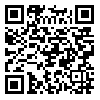Volume 10 - Special Issue
J. Pediatr. Rev 2022, 10 - Special Issue: 411-418 |
Back to browse issues page
Download citation:
BibTeX | RIS | EndNote | Medlars | ProCite | Reference Manager | RefWorks
Send citation to:



BibTeX | RIS | EndNote | Medlars | ProCite | Reference Manager | RefWorks
Send citation to:
Sobouti F, Dadgar S, Aryana M, Sobouti B. A to Z Steps of In-person Screening, Treatment, and Caring Procedure in Orthodontic Clinics During COVID-19 Pandemic: A Rapid Mini-review. J. Pediatr. Rev 2022; 10 :411-418
URL: http://jpr.mazums.ac.ir/article-1-401-en.html
URL: http://jpr.mazums.ac.ir/article-1-401-en.html
1- Dental Sciences Research Center, Mazandaran University of Medical Sciences, Sari, Iran.
2- Student Research Committee, Faculty of Dentistry, Mazandaran University of Medical Sciences, Sari, Iran.
3- Department of Pediatric Infectious Diseases, Burn Research Center, Shahid Motahari Burns Hospital, Iran University of Medical Sciences, Tehran, Iran. ,behnamsobouti@gmail.com
2- Student Research Committee, Faculty of Dentistry, Mazandaran University of Medical Sciences, Sari, Iran.
3- Department of Pediatric Infectious Diseases, Burn Research Center, Shahid Motahari Burns Hospital, Iran University of Medical Sciences, Tehran, Iran. ,
Abstract: (3576 Views)
Background: A novel coronavirus emerged from Wuhan, China, in December 2019. Dental healthcare providers are at the highest risk of exposure since the primary source of the virus is saliva, and dentists are the front-line personnel working with the oral cavity. Since orthodontic treatment is a long-term procedure for children and teenagers, and because of the critical gap in preparing a specific guideline on orthodontic treatment procedures, orthodontic practitioners have faced numerous complicated issues in this regard. This mini-review aimed to summarize the facts that the orthodontic settings should be aware of the dental difficulties during COVID-19 with a particular focus on orthodontic treatment.
Methods: In this short review, electronic databases of Medline, Scopus, Web of Science, and Google Scholar were searched for relevant articles and guidelines from January 2019 to March 2021 using the following key terms: “COVID-19,” “SARS-CoV-2,” “Pandemic,” “Orthodontics,” and “Orthodontists.”
Results: Gathering recommendations of experts and several guidelines led to the following crucial steps in orthodontic procedures: screening through a telehealth questionnaire; admitting just patients into the dental center; ventilating the waiting room; measuring the temperature of patients’ bodies; disinfecting the dental unit and instruments after each visit; using personal protective equipment; washing hands; minimizing the use of high-speed handpieces to reduce the aerosol generation; and sterilization of archwires, orthodontic markers, photographic retractors, molar bands, burs, miniscrews, and unit waterline with proper methods.
Conclusions: All dentists should be up-to-date on cross-transmission of SARS-CoV-2 and follow the international infection control protocols as well as national/provincial/local guidelines and apply them to the regional settings after generalization and matching with the condition.
Methods: In this short review, electronic databases of Medline, Scopus, Web of Science, and Google Scholar were searched for relevant articles and guidelines from January 2019 to March 2021 using the following key terms: “COVID-19,” “SARS-CoV-2,” “Pandemic,” “Orthodontics,” and “Orthodontists.”
Results: Gathering recommendations of experts and several guidelines led to the following crucial steps in orthodontic procedures: screening through a telehealth questionnaire; admitting just patients into the dental center; ventilating the waiting room; measuring the temperature of patients’ bodies; disinfecting the dental unit and instruments after each visit; using personal protective equipment; washing hands; minimizing the use of high-speed handpieces to reduce the aerosol generation; and sterilization of archwires, orthodontic markers, photographic retractors, molar bands, burs, miniscrews, and unit waterline with proper methods.
Conclusions: All dentists should be up-to-date on cross-transmission of SARS-CoV-2 and follow the international infection control protocols as well as national/provincial/local guidelines and apply them to the regional settings after generalization and matching with the condition.
Type of Study: Review Article |
Subject:
Dentistry
Received: 2021/04/17 | Accepted: 2021/08/11 | Published: 2022/01/1
Received: 2021/04/17 | Accepted: 2021/08/11 | Published: 2022/01/1
Send email to the article author
| Rights and permissions | |
 |
This work is licensed under a Creative Commons Attribution-NonCommercial 4.0 International License. |









